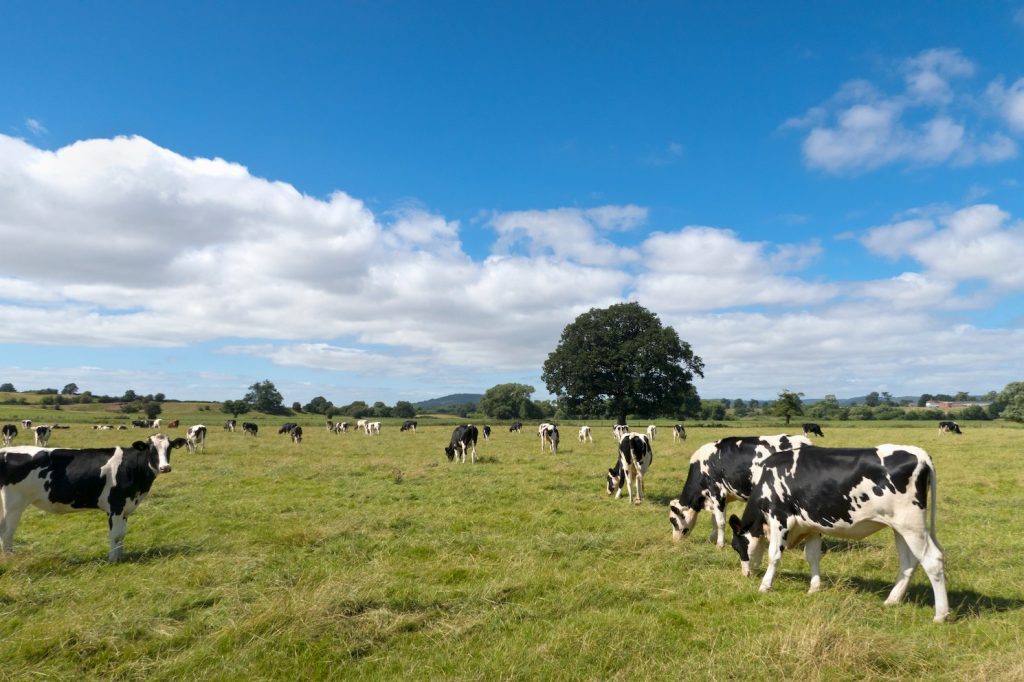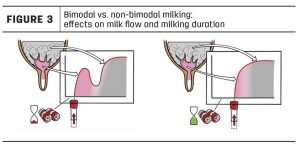
A few weeks back, as I drove across Marin County on my way back to San Francisco, I found myself passing through miles of dairy farms. It was a picturesque scene of lumbering cows, gentle hills and spring-time grass. But if you know anything about the environmental impact of dairy, it’s hard to see it that way. The industry is responsible for around 2 percent of U.S. greenhouse gas emissions, not far behind the contribution from aviation.
If I’d kept driving away from the Californian coast, I’d have come to another set of dairy operations in the state’s Central Valley. And on one of those farms, I’d have found what might be the beginnings of the solution to this emissions challenge.
Trinkler Dairy Farms is one of 13 operations around the city of Modesto that supply milk to Nestlé USA. If all goes well, in around five years from now it will join the short list of U.S. dairy operations that can claim net-zero status. The transition to net zero will be kick-started by a $1.5 million investment from Nestlé, the company announced last week.
Like so many other net-zero programs, no one technology or practice will make the transition possible. But at Trinkler there is a single piece of kit, albeit an expensive one, that can make a big dent in the farm’s emissions: A biodigester system that will process manure, a significant source of methane. The system will transform manure into fertilizer and water for the farm’s crops — all without creating any emissions. That alone will reduce the farm’s emissions by 30 percent, said Emily Johannes, senior manager for sustainable sourcing at Nestlé.
Alongside the digester system, the farm will use feed additives to reduce the quantity of methane that’s released when cows burp. Johannes estimates that when these and other emissions-reductions strategies are implemented, the quantity of greenhouse gases released at Trinkler will have been cut by around two-thirds. The residual emissions will then be accounted for by implementing regenerative agriculture practices that draw down atmospheric carbon dioxide and store it in soils.
“A biodigester system that will process manure, a significant source of methane. The system will transform manure into fertilizer and water for the farm’s crops — all without creating any emissions.”
At least that’s the plan. The impacts of feed additives and regenerative practices are still being studied, and farmers have much to learn. Still, Nestlé’s ambition for Trinkler is in line with what independent experts say is possible. Earlier this year, a study from the Markets Institute at the World Wildlife Fund concluded that large dairies can reach net-zero emissions within five years and generate a return of almost $2 million per farm in the process. Thanks to the Nestlé investment, which was made in partnership with Innovation Center for U.S. Dairy, we’ll find out relatively soon whether that theory translates into practice.
Assuming that additives and regenerative agriculture deliver on their promise, the principle barrier to other farms making this transition will be the upfront costs. When I talked with Johannes this week, she emphasized that right now the economics of net zero don’t work out for farmers. Sure, some operators can get grants from food industry partners such as Nestlé. Others may be eligible for state funding. Farmers may sometimes be able to charge a premium for milk produced in net-zero operations. But these funding streams alone won’t be enough to persuade most farmers to invest. For that kind of capital, the industry will be looking for help from the U.S. Department of Agriculture. Secretary Tom Vilsack is working on a strategy for climate-smart agriculture, and it’ll be interesting to see where dairy fits in.
























